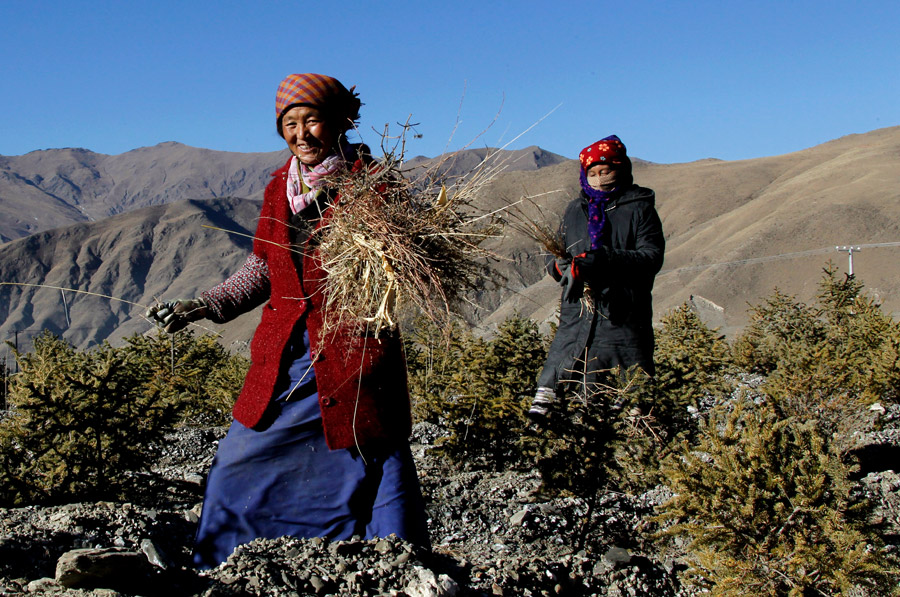Ecological advances on Qinghai-Tibet Plateau help farmers
By Hou Liqiang | China Daily | Updated: 2018-07-19 07:11

The environmental quality and living conditions on the Qinghai-Tibet Plateau have steadily improved thanks to government efforts, and local residents have been the economic beneficiaries due to the advent of green industry and ecological compensation policies, a white paper issued on Wednesday said.
"The Qinghai-Tibet Plateau has a low intensity of human activity. The air quality is little impacted, the types of pollutants are few, the density is low and the content of pollutants is similar to those at the North Pole," said the document, entitled Ecological Progress on the Qinghai-Tibet Plateau.
The white paper, published by the State Council Information Office, also said green production has begun to take shape on the plateau and local governments are committed to an eco-friendly path to economic growth involving low and intensive utilization of resources.
The plateau covers the entire Tibet autonomous region and Qinghai province, in addition to parts of Sichuan, Yunnan and Gansu provinces and the Xinjiang Uygur autonomous region.
Most of the plateau, covering about 2.6 million square kilometers and hailed as the "roof of the world", is over 4,000 meters above sea level.
According to the white paper, since 2004 the government has invested more than 3 billion yuan ($447 million) in Tibet, directed to more than 450 projects in 10 categories related to agriculture and animal husbandry unique to the region, including highland barley, and traditional Tibetan medicine.
More than 100 leading enterprises have emerged as a result, boosting local farmers' and herdsmen's incomes by a cumulative 1.18 billion yuan and benefiting 1.75 million people.
Tourism has become an important channel for green growth and higher incomes for farmers and herdsmen. In 2017, Tibet hosted more than 25.61 million visitors and its tourism revenue totaled 37.94 billion yuan, representing 28.95 percent of the region's GDP; Qinghai received 34.84 million visitors and its revenue totaled 38.15 billion yuan, representing 14.44 percent of the province's GDP, said the document.
An ecological compensation mechanism, including transfer payments to key ecological function zones, has been put in place for the plateau. From 2008 to 2017, the central government made transfer payments of 16.29 billion yuan and 8.35 billion yuan to the key ecological function zones in Qinghai and Tibet, respectively, covering all areas prohibited from development, according to the document.
"Properly balancing economic growth and environmental protection has always been a big concern for Tibet," said Zhang Yongze, vice-chairman of Tibet, adding the local government has been encouraging residents to increase their incomes by participating in environmental protection.
He said about 700,000 ecological protection-related posts, such as ranger and environmental supervisor, have been offered to people from poverty-stricken families.
Sanjiangyuan in Qinghai, home to the headwaters of the Yangtze, Yellow, and Lancang (Mekong) rivers, was designated a national park, the first of its kind, in 2005.
"The channels from which farmers and herdsmen in the park get incomes have been constantly broadened thanks to a series of measures authorities have taken," said Tian Jinchen, vice-governor of Qinghai.
houliqiang@chinadaily.com.cn
























